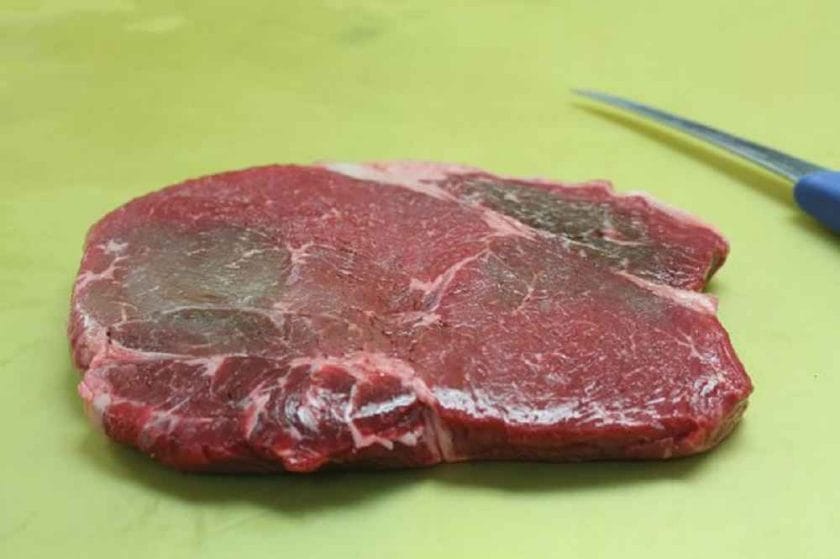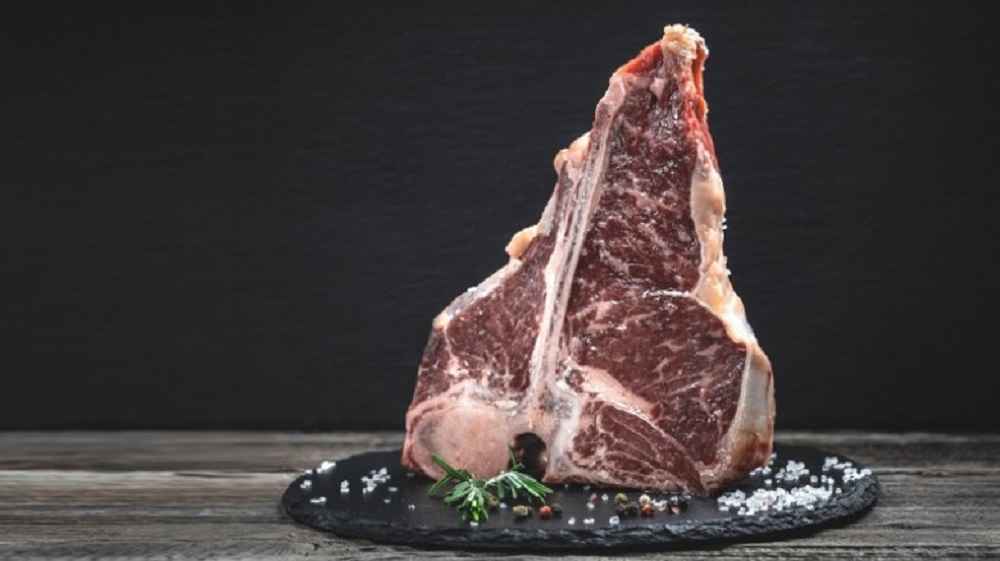Steak is a popular meat dish that many people enjoy, but sometimes it can turn gray in the refrigerator. This has raised safety concerns and may lead people to wonder if the steak is still safe to eat.
Understanding why steak turns gray is crucial for preserving the quality and safety of the meat. This article will explain the causes of gray steak, the science behind it, and what to do to prevent it.
Causes of Gray Steak
Age of the Steak:
One of the most common reasons why steak can turn gray is because of its age. As meat ages, it can change in color and texture, and may develop a grayish hue.
This is because of the breakdown of myoglobin, a protein found in meat that gives it its red color, as it reacts with oxygen in the air.
Exposure to Air:
Another cause of gray steak is exposure to air. When meat is exposed to air, oxygen reacts with the myoglobin and changes its color.
This is why vacuum-sealed meat has a longer shelf life and stays fresher for longer compared to meat that’s not vacuum-sealed.
Bacterial Growth:
Bacterial growth can also cause steak to turn gray. If the steak is not stored properly, bacteria can grow and cause spoilage.
This can change the color, texture, and flavor of the meat, making it unsafe to eat.
Thawing and Refreezing:
Thawing and refreezing steak can also cause it to turn gray. When meat is thawed, it can become exposed to air and bacteria, and if it’s then refrozen, the ice crystals that form can damage the cell structure of the meat, causing it to discolor.
Chemical Reactions with Marinades or Seasonings:
In some cases, chemical reactions between marinades or seasonings and the meat can also cause steak to turn gray. For example, acidic marinades can cause a chemical reaction that changes the color of the meat.
Understanding the Science Behind Gray Steak
The role of Myoglobin and Oxygen:
Myoglobin is a protein found in muscle tissue that gives meat its red color. When meat is exposed to air, myoglobin reacts with oxygen and changes color.
The amount of myoglobin in meat determines its color, with more myoglobin resulting in a deeper red color.
Changes in pH Levels and Enzyme Activity:
Another factor that can contribute to gray steak is changes in pH levels and enzyme activity. The pH levels of meat can change as it ages, and if the pH level drops too low, the meat can start to spoil and turn gray.
Enzyme activity can also affect the color and texture of meat, and if the enzymes aren’t properly denatured, they can cause the meat to discolor.
The role of Bacteria in Spoilage:
Bacteria play a crucial role in the spoilage of meat. If the meat isn’t stored properly, bacteria can grow and cause spoilage. This can change the color, texture, and flavor of the meat, making it unsafe to eat.
To prevent this from happening, it’s important to store meat properly and keep it at the correct temperature.
Is Gray Steak Safe to Eat?
Factors affecting safety:
Whether or not gray steak is safe to eat depends on several factors, such as the age of the steak, the amount of time it’s been stored, and the conditions under which it’s been stored.
If the steak has been properly stored and is still within its expiration date, it’s likely still safe to eat. However, if the steak has been stored for an extended period of time or if it’s been exposed to air, bacteria, or other contaminants, it may no longer be safe to eat.
Visual and Sensory Cues to Determine Safety:
In addition to considering the factors mentioned above, there are also visual and sensory cues that can help determine if gray steak is still safe to eat.
For example, if the steak has a slimy texture, a foul odor, or a metallic taste, it’s likely that it’s no longer safe to eat. On the other hand, if the steak still has its characteristic meaty aroma and flavor, it’s likely still safe to eat.

Tips to Prevent Gray Steak and Ensure Food Safety:
To prevent gray steak and ensure food safety, it’s important to store meat properly and keep it at the correct temperature. Steak should be stored in the refrigerator at a temperature of 40°F or below.
It’s also important to vacuum-seal or wrap the steak tightly to prevent air exposure. Finally, it’s a good idea to use a meat thermometer to ensure that the steak is fully cooked and reaches a safe internal temperature of 145°F.
How to Store Steak to Prevent Gray Discoloration:
Proper Packaging and Wrapping:
To prevent gray steak, it’s important to use proper packaging and wrapping. Vacuum-sealing or wrapping the steak tightly will prevent air exposure and help maintain its color and freshness.
Proper Storage Temperature:
Steak should be stored in the refrigerator at a temperature of 40°F or below. This will slow down the breakdown of myoglobin and prevent the growth of bacteria, helping to preserve the quality and safety of the meat.
Proper Thawing Techniques:
When thawing steak, it’s important to use proper thawing techniques to prevent gray discoloration. The best way to thaw steak is in the refrigerator, as this will help to maintain the quality and safety of the meat.

Conclusion:
In conclusion, gray steak can be caused by a number of factors, including age, exposure to air, bacterial growth, thawing and refreezing, and chemical reactions with marinades or seasonings.
Whether or not gray steak is safe to eat depends on several factors, including the age of the steak, the amount of time it’s been stored, and the conditions under which it’s been stored.
To prevent gray steak and ensure food safety, it’s important to store steak properly, use proper packaging and wrapping, keep it at the correct temperature, and use proper thawing techniques.
By understanding the causes of gray steak and following these tips, you can preserve the quality and safety of your steak.
Can gray steak be restored to its original color?
If a gray steak has discolored due to age or exposure to air, it cannot be restored to its original color.
However, if the discoloration is due to chemical reactions with marinades or seasonings, it may be possible to restore the color by washing off the marinade or seasoning.
Is it safe to eat gray steak if it has been stored in the freezer?
The safety of gray steak stored in the freezer depends on the amount of time it has been stored and the conditions under which it has been stored. If the steak has been properly stored and is still within its expiration date, it may still be safe to eat.
However, if the steak has been stored for an extended period of time or if it’s been exposed to air, bacteria, or other contaminants, it may no longer be safe to eat.
What are the risks of eating gray steak?
Eating gray steak that has gone bad can lead to food poisoning and other health problems. Gray steak may contain harmful bacteria, such as E. coli or Salmonella, that can cause serious illness.
In addition, the meat may have a foul odor, slimy texture, or metallic taste, indicating that it’s no longer safe to eat.
Can marinades cause gray discoloration in steak?
Yes, marinades can cause gray discoloration in steak if they contain acidic ingredients, such as vinegar or citrus juices, which can cause chemical reactions with the meat.
To prevent this, it’s important to choose marinades that are low in acid and to limit the amount of time the steak is marinated.
How can I tell if my steak is still safe to eat even if it is gray in color?
To determine if gray steak is still safe to eat, you should consider the age of the steak, the amount of time it’s been stored, and the conditions under which it’s been stored.
In addition, you can look for visual and sensory cues, such as a slimy texture, a foul odor, or a metallic taste, which may indicate that the steak is no longer safe to eat. If in doubt, it’s always best to err on the side of caution and throw the steak away.

